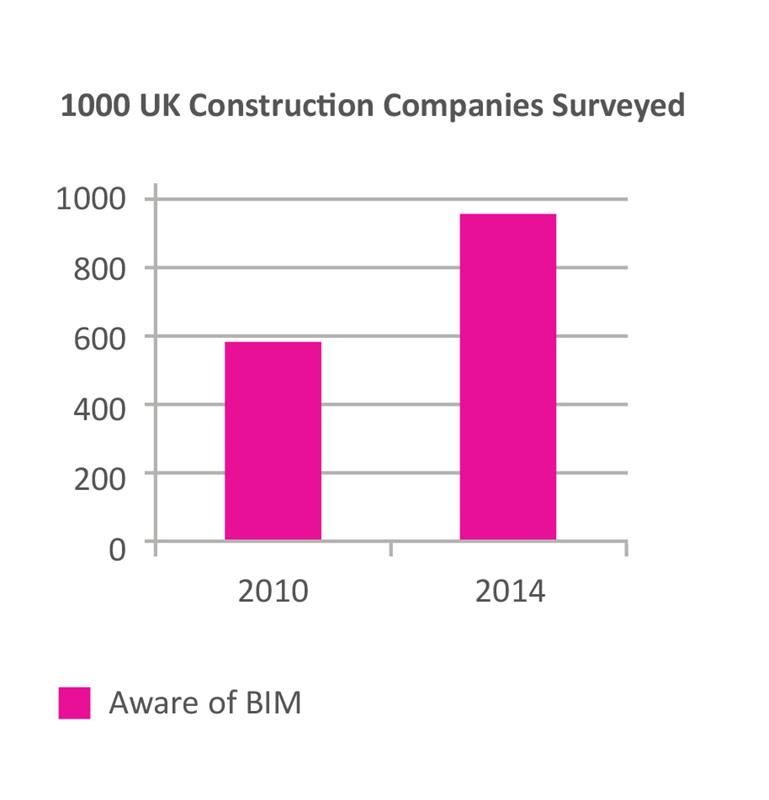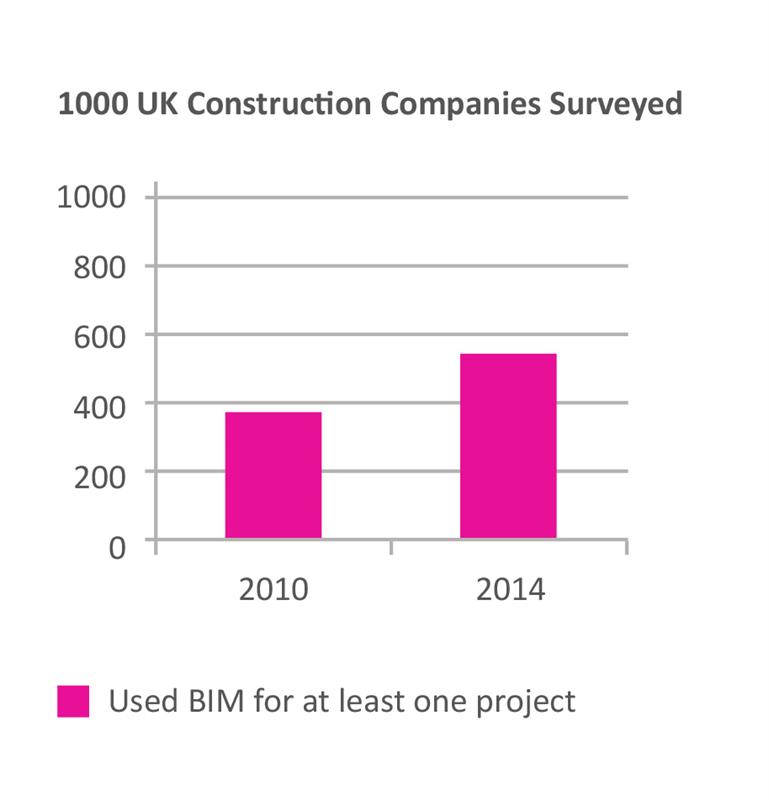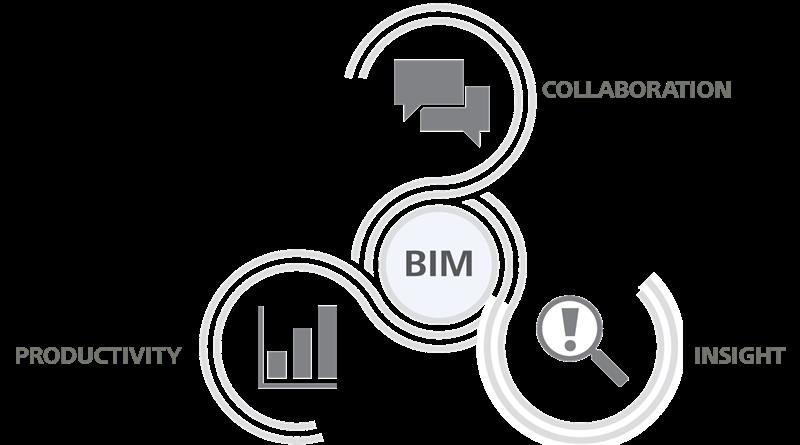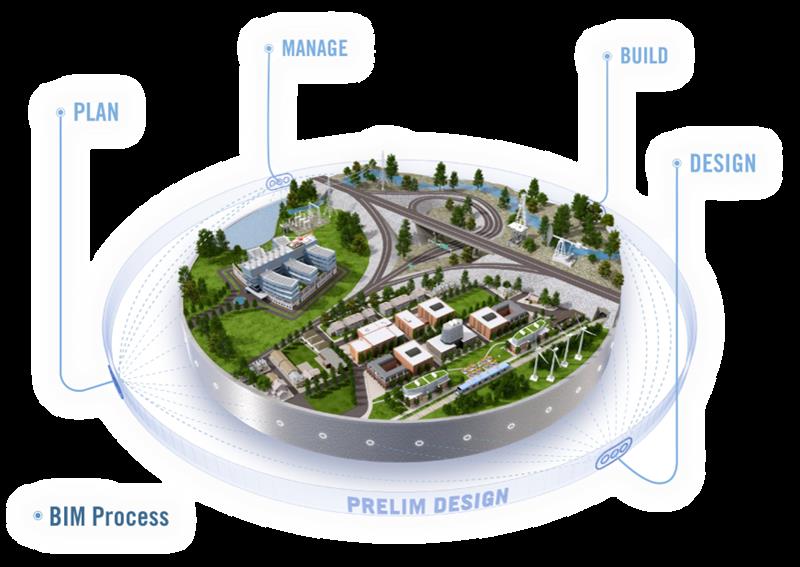Adoption and awareness of BIM has grown rapidly over recent years across the UK. Of 1,000 construction professionals from a broad range of disciplines, surveyed, The NBS National BIM Report finds that 95% were aware of BIM compared to just 58% in 2010, while in the last twelve months, 54% had used BIM on at least one project compared to 39% in the year before that.
 Further rises in these figures are likely in the near future as the UK Government has mandated the use of BIM for publicly-funded projects by 2016.In all this excitement about the future prospects of BIM, however, manufacturers of building products often get forgotten, with the focus squarely on architects, engineers and consultants.
Further rises in these figures are likely in the near future as the UK Government has mandated the use of BIM for publicly-funded projects by 2016.In all this excitement about the future prospects of BIM, however, manufacturers of building products often get forgotten, with the focus squarely on architects, engineers and consultants.
The reality is, however, that it is often the manufacturing for building products process that underpins the whole BIM model and will be key in driving its future success – not least in the provision of the key ingredient of any BIM project, the BIM object.
A definition may prove useful here. According to the National Building Specification (NBS), "a BIM object is a combination of many things:
"It is detailed information that defines the product and geometry that represents the product's physical characteristics. The visualisation data that gives the object a recognisable appearance and behavioural data, such as detection zones, enables the object to be positioned or to behave in exactly the same way as the product itself. There are two primary types of object: component and layered. The component objects are building products that have fixed geometrical shapes such as windows, doors, boilers etc. Layered objects are building products that do not have a fixed shape or size such as carpets, roofing, walls and ceilings."
As the NBS BIM Object Standard puts it, "more and more assets are being 'built with BIM', and this provides a fantastic opportunity to revolutionise the way in which users interact with the information contained in those assets. To achieve this, the digital building blocks that create virtual assets need to be standardised. These building blocks are commonly known as BIM objects."
The document goes on to state, "the availability of manufacturers' BIM objects is an important factor in achieving success with BIM. The number of manufacturers engaging with BIM is rising but not quickly enough. The construction industry needs a comprehensive library of manufacturer BIM objects."
 It is a viewpoint held increasingly strongly by construction professionals. As designers migrate from BIM awareness to BIM implementation, they are beginning to look to manufacturers to provide details of their products in a BIM-ready format. Indeed, the NBS National BIM Report 2014 finds that more than three-quarters of construction professionals want manufacturers to provide BIM objects whilst 80 per cent concurred with the view that BIM is the future of project information. "I would like to see more manufacturers providing content rich data," commented one survey respondent.
It is a viewpoint held increasingly strongly by construction professionals. As designers migrate from BIM awareness to BIM implementation, they are beginning to look to manufacturers to provide details of their products in a BIM-ready format. Indeed, the NBS National BIM Report 2014 finds that more than three-quarters of construction professionals want manufacturers to provide BIM objects whilst 80 per cent concurred with the view that BIM is the future of project information. "I would like to see more manufacturers providing content rich data," commented one survey respondent.
It is a viewpoint increasingly supported by the sector as a whole, with a growing range of vendors, industry associations and working groups swinging behind the move to BIM.In the latter category, one of the most influential is BIM 4 Manufacturers & Manufacturing (BIM4M2), a working group consisting of people and organisations concerned with BIM for manufacturers (the organisations) and manufacturing (the process). Developed to support the work of the BIM Task Group, BIM4M2 was formed by the Construction Products Association (CPA) but is separate to and independent from it. Members include manufacturers, consultants and content providers.
BIM4M2's stated long-term vision is:"For UK construction product manufacturing sector to be recognised as a world leader in the integration of BIM and manufacturing technologies to supply the products and solutions for a sustainable built environment."
To turn this vision into practical reality, it is critical that manufacturers are able to build the foundations for BIM by creating BIM-objects and components and by making product libraries available to architects and engineers, thereby helping them achieve competitive advantage when pitching for contracts.
The NBS BIM Object Standard is laying the foundations by providing consistency for BIM objects.The standard defines requirements for BIM objects, to give reassurance of quality to enable greater collaboration and information exchange across the construction industry.
It is positive to note that more than half of respondents to the fourth annual NBS National BIM Survey, said they were now sourcing BIM objects from a specialist BIM library, a figure that would be expected to rise still further as more manufacturers make their products available in this way.As technology continues to drive rapid change across the construction sector, the risks of objects that are created in-house and then reused becoming out of date will rapidly increase. Using a library will allow specifiers, with manufacturers' help, to ensure they have current and accurate information.
The leading BIM software providers recognise the importance of this kind of capability. The Autodesk® Seek web service for example, enables architects, engineers, and other design professionals to quickly discover, preview, and download branded and generic building information modeling (BIM) files, models, drawings, and product specifications for their active design sessions in Autodesk Revit® or AutoCAD® software.
Autodesk Seek also provides building product manufacturers with a means of connecting with the professional designers ultimately responsible for specifying and recommending their products for purchase.
 Growth Beckons
Growth Beckons
The emergence of the NBS BIM Object Standard has put an important framework in place for manufacturers of building products. Currently, they typically remain behind the architecture, engineering and construction (AEC) market when it comes to BIM adoption. Most are aware of BIM but it's only now with the upcoming mandating of BIM on public sector projects that pressure is really coming on manufacturers to migrate to the approach. This group is just beginning to understand the potential benefits of incorporating BIM into the way they interact with the other key players in the construction space.But challenges lie in wait.
The pending 2016 mandate is radically changing the kinds of offers that manufacturers need to make into big building projects. Instead of offering a set of 2D drawings, they must now provide 3D portals with metadata attached as a means of sharing their model or product offering. Two of the main challenges they face are resource and knowledge.
Most manufacturing and engineering companies are efficient; work to tight margins and have effective product development processes in place. This means they are well positioned to start adopting BIM-focused practices. Yet, even though most understand they will need to make a significant investment to migrate to BIM, many still have issues around resource.
If you are moving from drafting in 2D and modelling in 3D to the use of BIM packages like Autodesk Revit, you need to put in place new skills. That may mean new resource and an important role for solutions providers like Majenta Solutions.
Putting a Solution in Place
Industry software has a key role to play in turning BIM from theory to practical reality across this sector.Many manufacturers have already taken their first steps on this path by implementing software solutions like AutoCAD and Inventor from Autodesk. This gives them digital prototyping capability, but critically also paves the way for the introduction of BIM.
Autodesk has added BIM capability into Inventor over the last couple of years including vital family creation tools. Manufacturers are currently using Autodesk Product Design Suite as a development tool before transitioning over to the Building Design Suite, which incorporates Inventor, AutoCAD and Navisworks alongside Revit, thereby helping them validate their knowledge.
They can also make use of the BIM Exchange Area embedded within the Inventor software to create and share family files and ease the overall transition process between traditional 3D product design and BIM object creation.
This new environment authors (defines) and publishes (exports) Autodesk Inventor assemblies, weldments, and parts so users can work on them with AutoCAD and Revit. These applications are purpose-built building design and construction systems for documenting architectural, structural, mechanical, electrical, and plumbing (MEP) information.

In Context
The overall key is ensuring that manufacturers are not only aware of how BIM works in the manufacturing context but also understand the AEC aspect and how it is relevant for the key players in that sector. It's important that manufacturers understand the relationship between the two areas so that they can be certain that their solution is fit for purpose, while also ensuring that they are not giving away their IP.
Third-party solutions providers like Majenta Solutions can help here also in assisting their customers and in particular, in ensuring that the solutions that they offer are compliant and correct.
The latest solutions can act as versatile toolsets, enabling manufacturers to have all their relevant tools for manufacturing in, but also incorporating tools for BIM compliancy and the ability to view BIM models.
Providers need to understand their clients' needs and what they are trying to achieve. They need to match the information their clients' require with what they, as solutions providers, can deliver. They can then look to integrate the new BIM approaches into their customers' existing workflows, tweaking them, as and when required, to make them more streamlined.
Crucially, they also need to ensure they get noticed. That means marketing their BIM-ready objects effectively not just on their own website but also on leading digital content delivery websites like Autodesk Seek. And at the same time, they need to ensure they invest in knowledge-based marketing, training expert staff to ensure they spread the message about the benefits of BIM-ready manufacturing objects and components.
Challenges in Moving Forward
With the UK Government mandating the use of BIM on publicly funded projects from 2016 onwards, manufacturers of building products need to start moving to BIM right now if they want to ensure they can get their products specified on BIM ready projects and make certain they do not miss out on a potential future pipeline of lucrative contracts.
Many manufacturers remain behind the curve and are reactive rather than proactive in their approach to BIM.Often it takes the chance of pitching for a contract on a building project that is based on BIM to spur these organisations into action. They may end up with too little time to make the switch and fail to get their products specified on a job as a result.
Accessing the Benefits of a BIM Approach
BIM is closely associated with the sustainability of construction and has evolved in a market where costs are increasingly being scrutinised.
Solutions providers and systems integrators alike can play a key role here in educating the market to start thinking about the need for BIM immediately rather than waiting until it becomes an urgent requirement. They can bring their skills and expertise to bear to deliver a combination of training, consultancy and tailored services.
These companies need to be able to work in partnership with their manufacturer customers and help them with issues from setting up standards to putting field gap analysis in place. Often the switch to BIM will also entail a switch from a predominantly 2D environment to one based on 3D functionality.
Solutions providers will need to nurture their clients and guide them through a process that will be new to them. Typically also, manufacturers switching to BIM will need to put new support plans in place, including new approaches to storage, data management and file transfer. They'll need to ensure they are keeping data in a standard format that everyone can use. And they'll need to use data exchange tools such as Majenta MX, Autodesk 360 and Autodesk Buzzsaw for transferring 3D models rather than sending bulky files by email.
If they can do all of this, they will begin to be in a position where they can reap the many rewards that are likely to be forthcoming to those firms that have successfully transitioned to BIM.
The need to comply with a market environment where the provision of building product BIM information will ultimately become a requirement, must be paramount. However, by moving to BIM, they are also likely to achieve a broad range of other key benefits. In a typical scenario, these may include the ability to achieve competitive differentiation of their products across the design, specification and construction processes as well as the ability to drive increased maintenance and spare part sales.
Ultimately, while getting to grips with BIM is rapidly becoming a necessity to manufacturers of building products, by migrating to it, manufacturers will gain a broad range of business benefits as outlined above. At the same time also, by successfully integrating their own manufacturing technologies with BIM data to supply products and solutions for a sustainable built environment, manufacturers bring benefits to the broader construction sector from linking design, project and manufacturing information.
From a Manufacturer's Perspective
Biddle Air Products, a leading supplier of heating, ventilation, air conditioning and air curtain solutions to the building services industry, is one manufacturer wrestling with the need to make its products BIM-ready in time for 2016. For Biddle, the move to a BIM way of working will have broader benefits than simply complying with the Government's upcoming deadline. "It's good practice to make sure all of your product information is available to your customers at all times and the steps we are taking to get ready for BIM, ensure that we are doing that," says group marketing manager, Martin Phillips.But Biddle also recognises the timeliness of becoming BIM-ready straightaway.
"Much of the work we do feeds into the public sector, so it's critical to us that we are meeting the standards that central government, and increasingly local government, are demanding," adds Phillips. "More and more of our customers are wanting this today, so we did not want to leave it to the last minute.
That, for Biddle was a key reason for choosing to work with Majenta Solutions - as a partner who could help deliver a BIM capability in time and within budget.For manufacturers like Biddle there is often a great deal to do to be prepared for BIM. As Phillips explains: "we needed to make sure our plans, drawings and specifications were up-to-date and in the right format, that we have 3D drawings for all the products we would want to add to the BIM library – and, critically, that we could gather all the relevant information together in one place." Working alongside Biddle's small dedicated CAD team, Majenta's expertise in BIM and its added resource has proved invaluable in making this happen.
So, speaking from the perspective of a manufacturer of building products what does Biddle see as the main benefits of being BIM-ready? According to Phillips, "in the first instance, it's about being more competitive, it allows manufacturers to tender for large government contracts. In the longer term, it's about efficiency and streamlining processes.Making these kinds of products more accessible to users and owners across the building and construction sector will reduce the burden on manufacturers' technical teams and streamline and drive efficiencies across the entire support process."
Future Evolution
It is worth highlighting that BIM is not just about technology (software and data), it's more about the behaviour and culture of the construction industry. The collaborative element of BIM projects is rapidly evolving.
Going forward, BIM is likely to become more intelligent, more energy-efficient and thanks to standards development, more consistent. This is particularly important for manufacturers where the more intelligence you can build in from 4D development to costing analysis, the better. The more people buy into the concept of BIM for manufacturing, the more investment there will be and the better and more effective the approach will be as a result.




